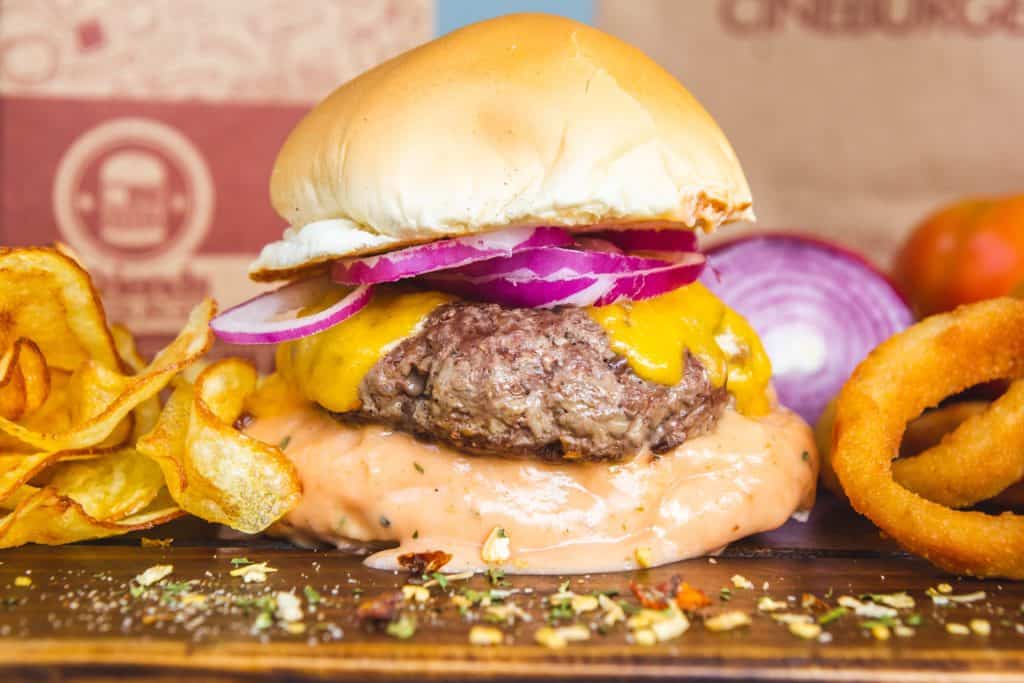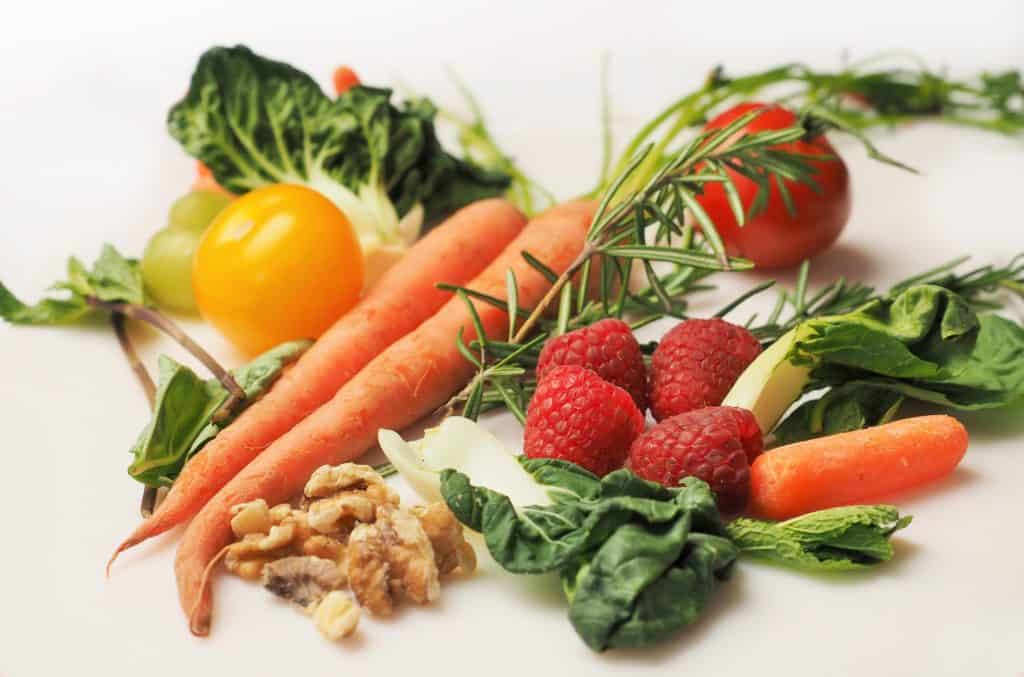The American Diet & Endo

The American Diet is Not Your Friend
Dear Endo Warrior, the American Diet is not your friend, point-blank.
During this series, we have introduced you to different ways you can decrease estrogen-dominance, something that is commonly associated with endometriosis.
In Part 1, we discussed estrogen-dominance as a whole, and 5 dietary changes that can help your body eliminate excess estrogen. In Part 2, we discussed the effects stress can have on your estrogen levels, and the many things you can do to help reduce stress.
Today we introduce another topic that affects so many of us every day. That is, the Standard American Diet. Essentially, this is a continuation of Part 1, but with an emphasis on why you should feel empowered to avoid the Standard American Diet.
The Standard American Diet
We live in a country that has found great value in the quick and easy. So many things are at our fingertips – quite literally. We can order groceries, learn new hobbies, get answers to questions, and speak to family members in different countries within a matter of seconds. Although this quick access is incredible, it has led to a culture that finds difficulty in slowing down.
The Standard American diet is a result of our on-the-go culture. Four key characteristics of the American Diet are as follows:
Quick Meals
On-the-go meals are quick and readily available in the freezer aisle and at every major intersection in our country. But these foods are high in inflammatory, fatty, processed, and fried foods, which leads to quick weight gain and poor health outcomes.
High Red Meat Consumption
It is no secret that Americans love red meat. Red Meat is often the focal point of many dishes and events. Football tailgaters look to burgers and hotdogs. Dive Bar goers often show up for steak nights at their local pub. And barbecue cook-offs are common along and below the Bible Belt. Unfortunately, red meat also seems to be a common cause of inflammation and intestinal distress.
Tons of Dairy, Sugar, and Gluten
Casseroles, dips, baked goods . . . the list goes on. Many of these signature American dishes are filled with ingredients like milk, cream, sugar, cheese, pasta, and bread. Unfortunately, they are also highly inflammatory and fatty.
Farmed Meat and Produce
To meet the demands of our country and the world, so many of the products sold in our grocery stores have undergone farming practices that involve additional hormones, genetic modification, and high pesticide use. All these practices can disrupt the endocrine system and may result in increased estrogen levels for consumers.
Avoid the American Diet
We understand that making dietary changes is no small feat, especially when the changes go outside your cultural norm. But the reward you’ll see – and feel – is worth every change you’ll make!
As previously mentioned in Part 1, changing your diet is one of the first steps you should take when trying to reduce your estrogen burden and gain control of endometriosis. Ultimately, our goal is to help you balance your hormones and reduce any estrogen-dominance you may be facing.
The American Diet Affects Your Endo and Hormones
Unfortunately, the Standard American Diet can lead to a worsening of your endometriosis symptoms; something we know you are trying to avoid.
Fast food can quickly cause an Endo flare.
Fast food is notorious for its processed and fried foods; both of which fall into the high-fat category. High-fat foods are known to cause inflammation and weight gain. Remember, in Part 1, we discussed that estrogen loves to harbor in the fat deposits within the body. Additionally, one study concluded that high-fat diets resulted in “increased inflammatory markers within the peritoneum;” which is where endometriosis is commonly found (3).
Basically, by introducing your body to these foods, you may end up with higher estrogen levels, worsening pain, and a potential worsening of your endometriosis lesions.
So, avoid the fast food and get cooking! And don’t be intimidated. There are countless recipes and resources online that can help you as you navigate the kitchen.
Red Meat and Endo are a No-Go.
Some people may tolerate endometriosis without any symptoms, but it’s important to know that it can still be affecting your endometriosis.
In a study conducted over the course of 22 years, the researchers “observed that red meat, both processed and nonprocessed, was associated with an increased risk of laparoscopically confirmed endometriosis” (1).
Alternative options include free-range poultry, wild-caught fish, and, even better, plant-based protein sources.
Sugar, Dairy, and Gluten- The 3 main culprits

Although delicious, these three food categories are also known to cause inflammation in the body, which can exacerbate pelvic pain, along with any other sources of pain.
Many Endometriosis Experts, like Dr. Andrew S. Cook and Dr. Iris Orbuch, find that most of their patients have a decrease in pain by eliminating their consumption of sugar, dairy, and gluten.
Additionally, dairy has been shown to have high levels of dioxin, an endocrine disruptor that was found to increase the chances of developing endometriosis (2).
The great news is that there are countless non-dairy, and gluten-free options that are easy to find and/or create. Likewise, conventional sugar can be replaced with other natural sweeteners like dates, monk fruit sweetener, stevia, and coconut sugar.
Endocrine Disruptors
Endocrine disruptors are chemicals that mimic the hormones that are naturally produced in the body. They can “alter hormonal functions” and “potentially produce overstimulation” of the hormones they are mimicking (4).
Unfortunately, the farming practices in America can lead to increased exposure to several endocrine disruptors. Added hormones, frequent pesticide use, and genetically modified produce, all play a role in hormonal imbalances, like estrogen-dominance.
So, what can you do? Avoiding conventional produce and proteins can significantly reduce your exposure to these chemicals. However, we understand that going all-organic is not an option for everyone. In that case, we recommend you look into the Dirty Dozen list provided by the Environmental Working Group.
Changing Your Mindset

With all this being said, why do you continue to succumb to cultural norms and traditions? Why are you not advocating for the foods that will help your body thrive?
So often you hear us encouraging you to speak up about endometriosis and the healthcare you deserve. But let’s not forget that your diet and lifestyle are key factors to how your endo symptoms manifest.
Maybe the best way to look at it is by asking yourself this:
“Does this meal support my body? Am I advocating for my health by eating this or am I letting my cultural norms call the shots?”
In the end, “what you eat can either fuel your endo pain, or help diminish it” (5). And if you think about it, eating foods that will help your body thrive is the absolute best way you can advocate for yourself on a daily basis.
So, do you feel empowered yet?! Are you ready to show up for yourself and your body?
Due to each body being uniquely individual, it seems unethical to promote an end-all, be-all diet. However, if you want to learn about foods that you should be incorporating to reduce your estrogen burden, see part 1 of this series. And if you’d like to learn more about how nutrition can affect your pelvic pain, Dr. Iris Orbuch and Dr. Amy Stein recommend this book by Jessica Drummond (5).
References
- Chavarro, J.E., Harris, H.R., Missmer, S.A., Vitonis, A.F., Yamamoto, A. (2018). A prospective cohort study of meat and fish consumption and endometriosis risk. American Journal of Obstetrics and Gynecology, 219(2), 178.e1-178.e10. https://doi.org/10.1016/j.ajog.2018.05.034
- Cook, A. S., & Franklin, R. (2012). Stop endometriosis and pelvic pain: What every woman and her doctor need to know. Los Gatos, CA: Femsana Press.
- Heard, M. E., Melnyk, S. B., Simmen, F. A., Yang, Y., Pabona, J. M., & Simmen, R. C. (2016). High-Fat Diet Promotion of Endometriosis in an Immunocompetent Mouse Model is Associated With Altered Peripheral and Ectopic Lesion Redox and Inflammatory Status. Endocrinology, 157(7), 2870–2882. https://doi.org/10.1210/en.2016-1092
- National Institute of Environmental Health Sciences (2019). Endocrine Disruptors. Retrieved October 1, 2019, from https://www.niehs.nih.gov/health/topics/agents/endocrine/index.cfm
Orbuch, I. K., & Stein, A. (2019). Beating endo: How to reclaim your life from endometriosis. New York, NY: HarperCollins Publishers.
About The Author: Melissa Velasco
Melissa is a Registered Nurse who has spent over 6 years providing education and care to adults battling illness and disease.
In 2017, she was diagnosed with Endometriosis. Since her diagnosis, Melissa has devoted her spare time to providing research-based education, advocacy, and support to people struggling with Endometriosis